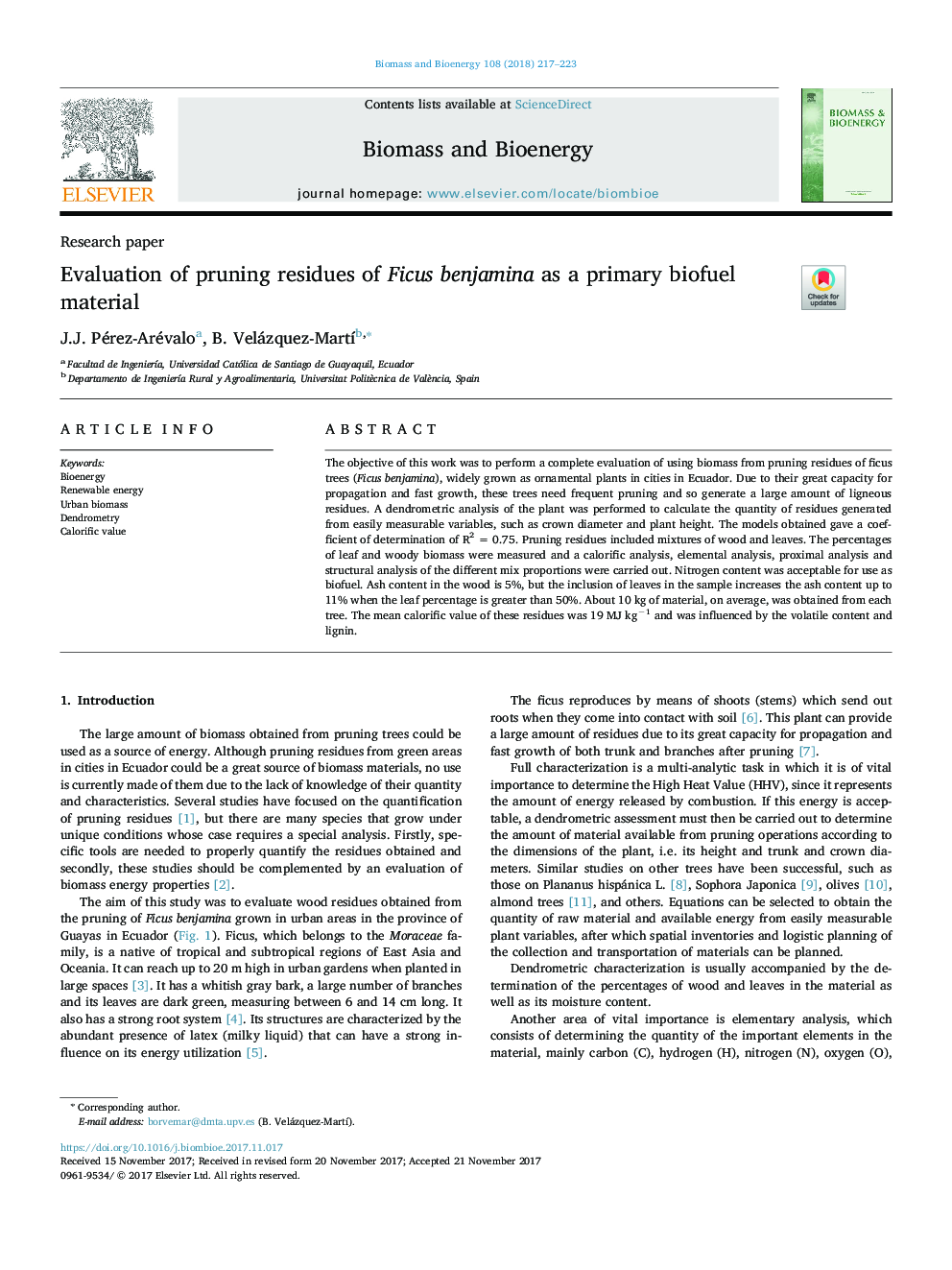| Article ID | Journal | Published Year | Pages | File Type |
|---|---|---|---|---|
| 7063059 | Biomass and Bioenergy | 2018 | 7 Pages |
Abstract
The objective of this work was to perform a complete evaluation of using biomass from pruning residues of ficus trees (Ficus benjamina), widely grown as ornamental plants in cities in Ecuador. Due to their great capacity for propagation and fast growth, these trees need frequent pruning and so generate a large amount of ligneous residues. A dendrometric analysis of the plant was performed to calculate the quantity of residues generated from easily measurable variables, such as crown diameter and plant height. The models obtained gave a coefficient of determination of R2Â =Â 0.75. Pruning residues included mixtures of wood and leaves. The percentages of leaf and woody biomass were measured and a calorific analysis, elemental analysis, proximal analysis and structural analysis of the different mix proportions were carried out. Nitrogen content was acceptable for use as biofuel. Ash content in the wood is 5%, but the inclusion of leaves in the sample increases the ash content up to 11% when the leaf percentage is greater than 50%. About 10Â kg of material, on average, was obtained from each tree. The mean calorific value of these residues was 19Â MJÂ kgâ1 and was influenced by the volatile content and lignin.
Related Topics
Physical Sciences and Engineering
Chemical Engineering
Process Chemistry and Technology
Authors
J.J. Pérez-Arévalo, B. Velázquez-MartÃ,
